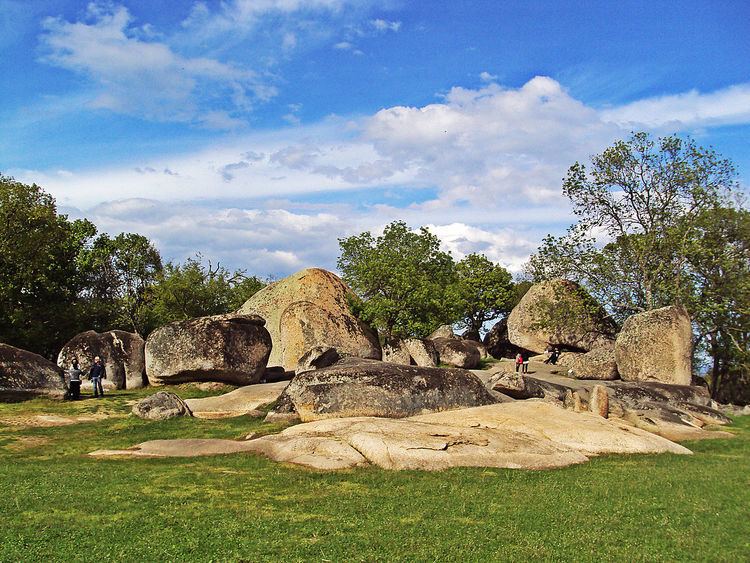Type Monument Public access free Phone +359 56 820 344 | Area 6 ha | |
 | ||
Hours Open today · Open 24 hoursThursdayOpen 24 hoursFriday(Bulgaria Liberation Day)Open 24 hoursHours might differSaturdayOpen 24 hoursSundayOpen 24 hoursMondayOpen 24 hoursTuesdayOpen 24 hoursWednesdayOpen 24 hours Similar Ropotamo, Maslen nos, Veleka, Strandzha, Belintash | ||
Beglik Tash (Bulgarian: Беглик Таш), is a Thracian rock sanctuary situated on the southern Black Sea coast of Bulgaria, a few kilometers north of the city of Primorsko.
At the end of the 19th century, the Czech-Bulgarian historian and archaeologist Karel Škorpil produced the first scientific account of the sanctuary, which was then known as Apostol Tash. In 2002, the Bulgarian archaeologists started excavating the place under the supervision of archaeologist Tsonia Drazheva.
Beglik Tash - an expression whose meaning is probably related to the tax on sheep collected by the Ottoman authorities until 1913, the "beglik", and a Turkish word to describe an area made of large stones, taşlar - is a natural phenomenon of huge megaliths arranged and carved by a Thracian tribe and later used for religious ceremonies. It is part of a wider surrounding area and a natural rock formation of huge monolithic blocks of volcanic origin, and were formed of hardened magma that erupted from a volcano active during the Mesozoic era.
Most of the megaliths have traces of carvings for the purposes of Thracian rituals. There are also the remains of a labyrinth that visitors can pass through. A Thracian sun clock is formed from huge stones. There is also a 150-ton rock that rests on the ground in only two places, and a "womb-cave".
Inside it, archaeologists have found ceramic artefacts from the Early Iron Age (10th-6th century BC), the Antiquity, and the Middle Ages, as well as a man-made stone altar at the end of the natural cave which proves that it was used as a shrine. Every day at noon, a ray of sunlight enters the narrow entrance of the cave, and projects itself on the back of cave. According to late Bulgarian archaeologist Prof. Alexander Fol, the founder of thracology, some of the Thracian womb-caves had the property of letting the sunlight in only at certain times of the day, a natural phenomenon seen by the Thracians as acts of symbolic fertilization of the Earth womb or the Mother Goddess by the sun phallus of the Sun God.
The site is an open-air museum maintained by the Burgas Historical Society. It is visited annually by 40,000 tourists. Beglik Tash is located in the vicinity of two other Thracian sites: the city of Ranuli and the fortress of Pharmakida in the Strandhza mountain.
